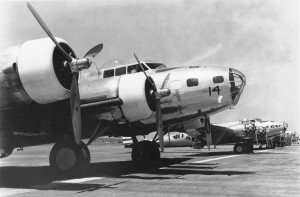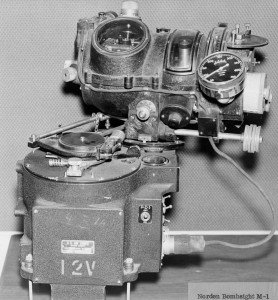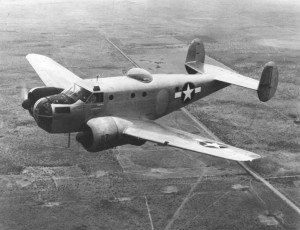Trips Into History takes a look at the Norden Bombsight which enabled World War Two bombers to have as much precision as possible during the conflict. Known as the “Blue Ox“, the Norden Bombsight apparatus was used by the U.S. Navy during World War Two and by the Air Force during both the Korean and Vietnam wars.

Today, the Norden Bombsight can be viewed at several locations around the United States. One location is at the Childress County Heritage Museum in Childress Texas. Childress was the location during the Second World War of an Army Airfield training bomber crews. The Childress Municipal Airport today was originally built as an airfield dedicated to training bombardier crews named the Childress Army Airfield. The class of cadets went through a three month program. The U.S. had set up more than a dozen of these bombardier training schools and in Texas they were located at Big Spring, Houston, Midland, San Angelo and Childress. The first school in the U.S. was at Lowry Field in Colorado. There was also a lot of training going on in the desert southwest. The Army Airfield was also the site of a prisoner of war camp during the war. Prisoners at the camp were a combination of Germans and Italians. Texas as a whole had about twice as many POW camps than any other state.

Another location in addition to the Childress Texas Museum where the Norden Bomb Sight can be viewed today is the Computer History Museum in Mountain View California south of San Francisco. Another venue where the Norden Bombsight is exhibited is the National Museum of the U.S. Air Force located at Wright-Patterson Air Force Base near Dayton Ohio. Yet, another display of the Norden Bombsight can be found at the Armed Forces History Museum in Largo Florida.
The Norden Bombsight was a classified piece of equipment and as such was guarded. The bombsight was originally developed by Carl Norden in 1932, some ten years prior to the U.S. entering World War Two, and the U.S. military adopted it that year although it was so classified that not many people knew of it’s existence for well over ten years. As an example of it’s high secrecy status, at the Childress Army Airfield, the bombsites were actually locked away in a building when not in use. In fact, bombardiers had to take an oath that their knowledge of the apparatus would be kept a secret. When their training courses and/or missions were completed the device was placed in a bag and locked up in a vault. As far as the public was concerned, their knowledge of the Norden Bombsight didn’t occur until 1944. By that time it’s classified nature was downgraded.

The real fact of the matter was that the secrecy of the Norden Bombsight had been compromised years earlier by German spies in the United States. As a result, the Germans were aware of the device and it’s diagrams even prior to the start of the war. A German spy by the name of Herman Lang, employed by the Carl L. Norden Company passed on the information to the German military command in 1938. Lang reportedly passed on the details of the bombsight totally from memory. Lang was part of a wider German spy ring operating in the U.S. known as the Duquesne Spy Ring. It’s leader was Fritz Joubert Duquesne who had served in the Boer War and claimed to have sabotaged the British ship HMS Hampshire in 1916 in which Lord Kitchener lost his life. It wasn’t until 1941 that the FBI arrested the ring which included 32 others in addition to Lang. This stands as the single largest spy ring conviction in the history of the United States. As can be anticipated the equivalent to the Norden Bombsight under various names appeared aboard various Luftwaffe aircraft during the war.
The Norden Bombsight was a clever device. During World War One, the system used was referred to as vectoring. This was essentially using wind speed and direction coupled with an aircrafts speed to determine a suitable vector to the target. The Norden system utilized a computer within the bombsight. With input from the bombardier, the computer would automatically calculate the plane’s altitude, speed, wind direction and speed and come up with an aim point.

The computer would automatically update the calculations after data input and show through the crosshairs where the bomb needed to be released. When the Norden Bombsight was directly connected to a Sperry C-1 Autopilot, the system was extremely accurate. Essentially, the Norden Bombsight allowed for much greater accuracy along with automatic functioning. The Norden system let the device itself release the bomb at just the correct moment. The Norden was principally a high altitude bombing mechanism employing smaller angles. It was not as effective in lower altitude bombing runs where the angle would be much greater and changing much more rapidly. Of course, the accuracy of the Norden system was no match for present day bombing guidance which can place a bomb or missile within just a few feet of it’s intended target.
Two additional articles you’ll enjoy on our Western Trips site are the Galveston Texas World War Two Defenses and the Defenses of San Francisco during the war.
On our Trips Into History site see the article about Alberto Santos-Dumont / The Inventor of the Airplane?
(Article copyright Trips Into History. Photos are from the public domain)
